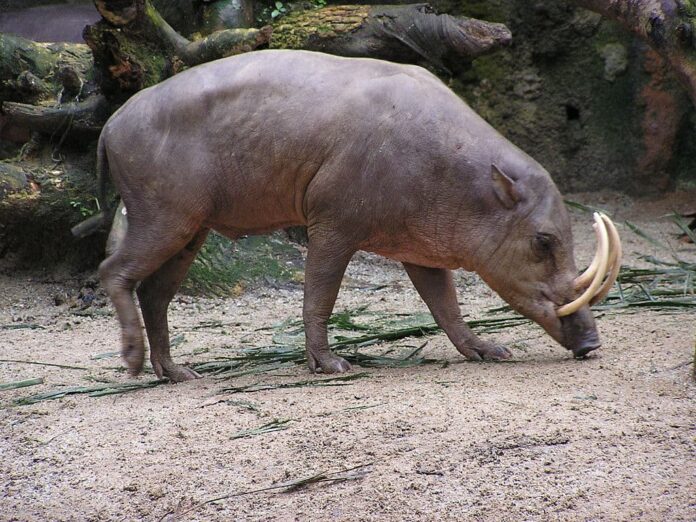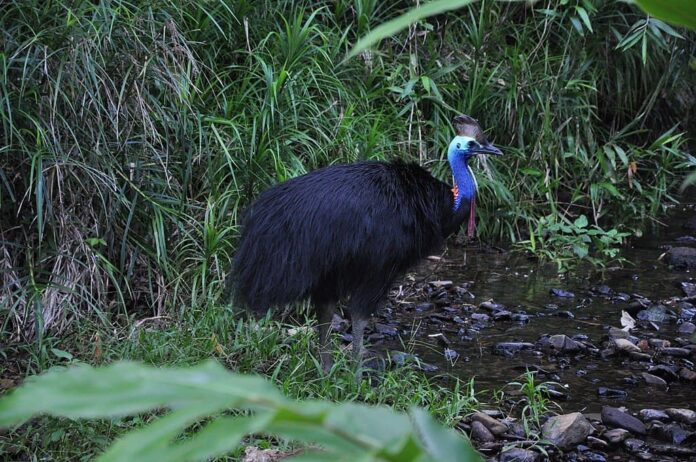It has been millions of years since the so-called meteorite wiped the dinosaur populations from the earth. However today, there are prehistoric-looking animals that are still roaming the land and sharing the world with us. Looks like only the huge prehistoric animals were gone because I have found the 10 most interesting prehistoric-looking animals for you. Each of them has the look as if they come straight out of Jurassic Park except they do exist in real life. Some of them are quite common among people while others don’t, so let’s find out together.
1Alligator Snapping Turtle

Here you are looking at the largest freshwater turtle in North America, and one of the prehistoric-looking animals on earth. With their spiked shell, beaklike jaws, and thick scaled tails, people often refer to them as the “dinosaur of the turtle world.” You can find these dangerous prehistoric-looking turtles almost exclusively in the rivers, canals, and lakes of the Southeastern United States. These turtles are very aggressive, and they are not afraid to snap your fingers with their massive beaks. The alligator snapping turtles spend most of their lives in water, and they eat almost anything they can catch. The species is not under threat due to the exotic pet trade, over-harvesting for meat, and habit destruction.
2Armadillo

The body exterior aka armor brings armadillos the nickname of “living dinosaurs”. As a matter of fact, armadillos are long-lost relatives of the now-extinct Glyptodonts which were huge armored mammals. The Glyptodonts went extinct at the end of the last ice age, and they look almost exactly the same as armadillos. The fully grown Glyptodonts could grow as large as 4 meters long with a height of 1.5 meters and weight of up to 2 tons. Back then people hunted them and used their bony shells as shelters during inclement weather.
As for our modern-day armadillo, their average length is only about 75 centimeters including the tail. Their shells have traditionally been used to make the back of an Andean lute instrument known as the Charango.
3Babirusa

Found in swamps and rainforests of Indonesian islands, babirusas are one interesting prehistoric-looking animals to learn about. Their most noticeable feature is their massive curving tusks that grow through their upper lip and curve toward the eyes. Those tusks are part of the prehistoric appearance, and the paintings of babirusa found in caves have been dated back at least 35,400 years. Babirusas are omnivores, and they usually feed on leaves, fruit, berries, nuts, mushrooms, insect larvae, and insects. In Indonesia, the striking appearance of this prehistoric-looking animal has also inspired demonic masks as well.
4Cassowary

This flightless bird is definitely one of the most prehistoric animals on the list both the look and history. Also known as the Dinosaur Bird, the bird has been here on earth since around 180 million years ago. This species is the third tallest and the second heaviest bird as well as one of the flightless birds. With everything combined, they are also among the most dangerous birds in Australia and in the world as well. The bird is equipped with a toothless and parrot-like beak that can strike and injure other beings easily.
The most dangerous trait of the cassowary is their three-toe feet with sharp claws that look and work like daggers. The best part that makes them look more prehistoric is their crest as well as their coloration. This beautiful bird species is native to the humid rainforest of New Guinea, nearby smaller islands, and northeastern Australia. The habitat of this prehistoric-looking bird has declined, and that will also lead to a drop of its population as well.
5Emu

Many of us know emus as one of the flightless birds on earth, but they are more than that. Emu is the second tallest bird that has roamed the Australian outback for over 80 million years now. This bird species has flat breast bones without keel, and they have no wing muscles at all which is why they cannot fly. However, the emus are gifted with strong legs that allow them to run up to 40 miles per hour. They can also use those legs as a defense mechanism as well, one kick and they can injure you real bad. No matter how powerful their kicks can be, emus still have predators which are dingoes and wedge-tailed eagles. Even us humans also play a part in harming their population as we hunt them for their meat and large eggs.
6Horseshoe Crab

Considered living fossils, horseshoe crabs have their origin about 450 million years ago. Look like prehistoric crabs, these creatures are more closely related to scorpions and spiders. The horseshoe crab has a hard exoskeleton along with 10 legs for walking along the seafloor, and multiple eyes. These prehistoric-looking animals got their name from their round and U-shaped head which is the largest part of their body. The horseshoe crabs have existed even before dinosaurs, and there are four species of horseshoe crabs today.
This interesting animal likes to dine at night, and they feed on worms, clams, and algae. Because they have no mandibles or teeth, the horseshoe crabs crush their food between their legs before passing it to the mouth. Their population is going down lately due to habitat loss and over-harvesting for their blue blood. On top of that, some fishermen use the horseshoe crabs as bait to fish for eels, whelk, or conch.
7Nautilus

This is the perfect example of prehistoric-looking animals from the dinosaur era since 500 million years before. Nautilus is a cephalopod which makes them a cousin to squid, octopus, and cuttlefish, but they lack the ability to camouflage. Another difference is that they have poor vision, and their primitive eyes have no lenses. This creature lives inside its hard external shell that has many closed interior chambers known as compartments. The inner chambers are filled with gas that helps them to maintain neutral buoyancy.
They might appear slow, but their way of feeding is one interesting thing to know about. Nautilus has grooves and ridges on the tentacles that it uses to grip prey and deliver food to a crushing, parrot-like beak. They feed on small shrimps, crabs, and fish, and they also scavenge on dead animals. Their number is now going down due to the over-collection of their beautiful shells.
8Pangolin

Looking similar to an armadillo at a glance, Pangolin is also one of the prehistoric-looking animals as well. The sad thing about them is they are the world’s most hunted animals, and they are so close to the brink of extinction. Considered a delicacy in countries like China and Vietnam, people hunt them for their meat and scales for health treatment purposes. Pangolins have been around for 80 million years now, and they have evolved some amazing and surprising abilities throughout history.
When it comes to defending themselves, they don’t run or attack, they simply stop and curl up. That is why they are easy to hunt by poachers because all they need to do is to pick the pangolins up. After surviving for millions of years, the pangolins are so close to extinction nowadays due to illegal hunting and habitat loss. There are eight species of them, each of which is listed as being threatened with extinction.
9Sturgeon

With bony plates (scutes) that cover the head along with five longitudinal rows of similar plates along the body, this is one prehistoric-looking fish. The evolution of this creature dates back to the Triassic period which is about 245 to 208 million years ago. This fish species has a toothless mouth that is on the underside of the snout is preceded by four sensitive tactile barbels. You can find this enormous fish in greatest abundance in the rivers of southern Russia and Ukraine and the fresh waters of North America.
The sturgeon can grow as long as 2 to 3.5 meters in length or even longer, heavier, and bigger. The fish is a long-lived and late-maturing fish with distinctive characteristics that roam large freshwater lakes and rivers. Their average lifespan is from 50 to 60 years, and they migrate upstream to spawn. The unique thing about sturgeon is that many of them leap completely out of the water, usually making a loud splash. You can hear that splashed half a mile away on the surface or probably further underwater. Nowadays, their population has been declining due to overfishing, poaching, habitat destruction, and the construction of dams.
10Tadpole Shrimp

Been roaming the world for at least 220 million years, tadpole shrimps are the oldest known animal species. When dinosaurs were walking our planet, these shrimps were swimming in pools alongside them. Nowadays, tadpole shrimps live in seasonal brackish or freshwater pools that dry out in summer. These shrimps are able to survive in temporary pools due to the unique properties of their eggs. No doubt why they have been surviving from the beginning of the world today. Tadpole shrimps are omnivores, and they feed on small aquatic invertebrates, aquatic plants, and sediment. This species is now under threat due to the introduction of predators, pollution, and invasive aquatic plants.
Related Post: Pre-Historic Animals That Are Alive Today Part I



